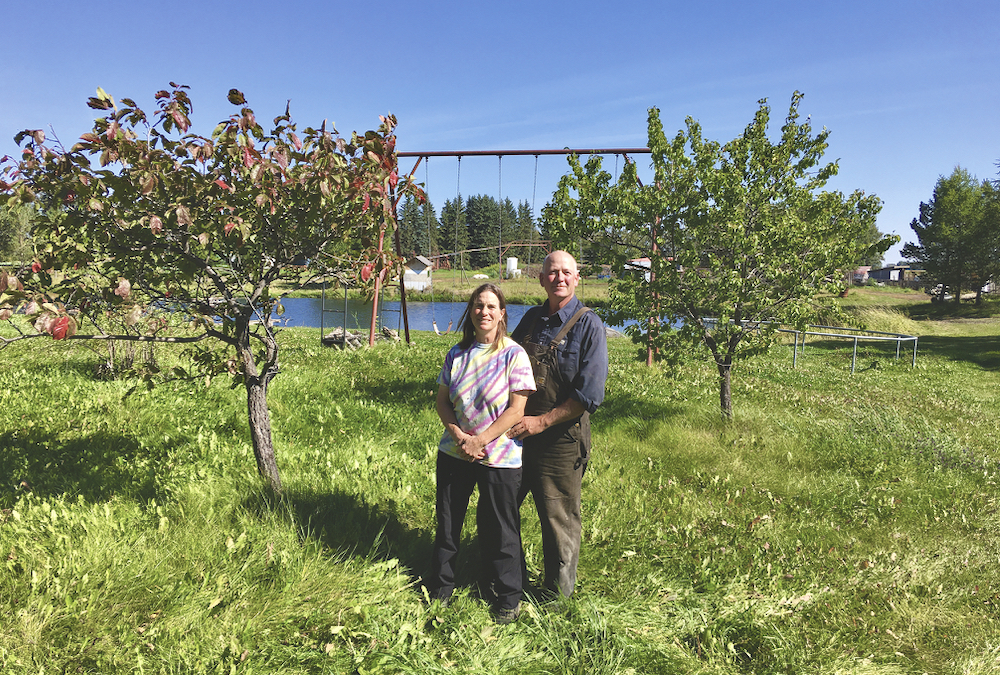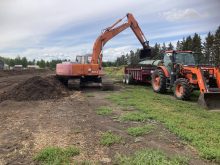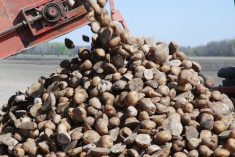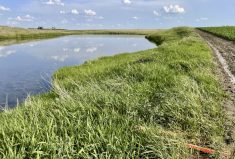Conventional grain farmers have chemical tools to manage weeds post-harvest, but for certified organic producers like Ward Middleton, options are limited.
“We don’t really have a sledgehammer-type problem-solving option to control weeds, so we have to use many little hammers,” said Middleton, quoting weed ecologist Eric Gallandt, who coined the phrase at the 2012 Canadian Organic Science Conference.
In the fall, these “little hammers” include tillage, grazing and cover crops.
Read Also
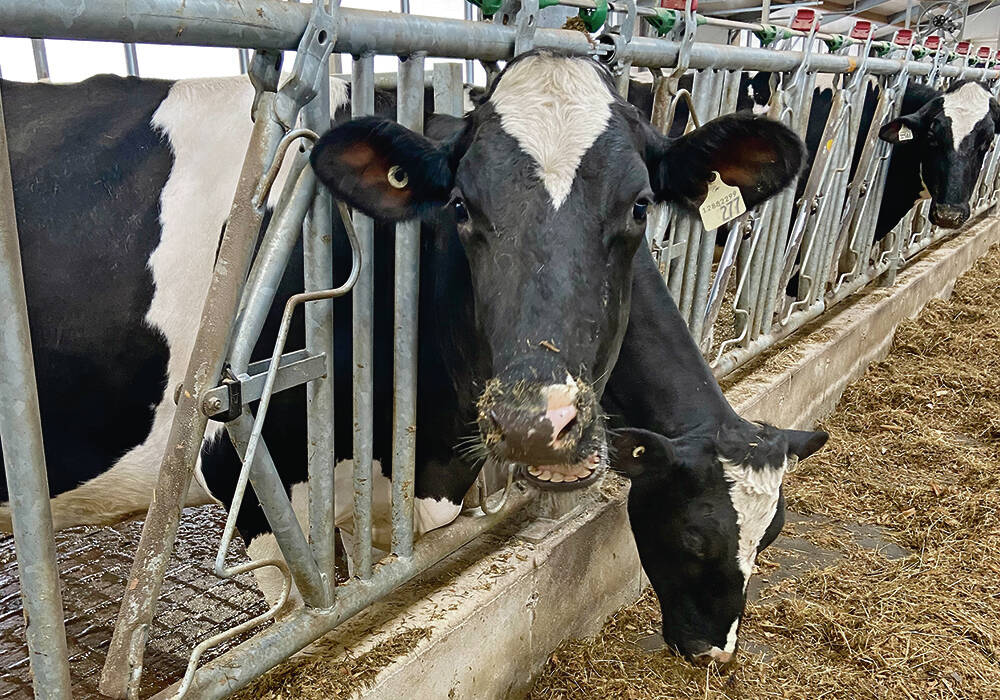
Alberta Milk opens annual hospital fundraiser
Alberta Milk embarks on holiday season campaign to raise money for Alberta Children’s Hospital Foundation
“We try to be as judicious as possible in deciding on the tool that will give us the best balance between the control we’re looking for and the least amount of disruption to the soil,” said Middleton from his mixed organic farm north of Edmonton.
Grazing weed-intensive areas is a big part of Middleton’s post-harvest weed management strategy.
“What we’ll do is take the herd of cattle we were grazing in the summer and keep that herd of cattle over until we’re winter feeding,” he said. “They become part of the tool that we’re using for some of that weed management.
“Anything that Is still green and growing, the cattle will graze off. You have to do anything you can do to deplete the reserves that perennial plants use to carry themselves through the winter to survive.”
Middleton sets up his fall weed management at harvest by using a catcher on his harvester to capture chaff. That chaff may still contain weed seeds he doesn’t want to disperse so he employs an unusual solution.
“We actually run it through a blower and a cyclone (dust collector) and drop it on top of the straw swath as though we’re going to bale it. But instead of the chaff first being spread on the ground before the straw falls on the ground, we instead drop the straw first and then put the chaff on top of the 12-inch row.”
The straw and chaff mixture is then picked up and used as bedding or left in the swath for cattle to eat.
Organic farming is sometimes criticized for its use of tillage, but the use of organic inputs, cover crops and perennial forages tends to cancel the negative effects of the practice, proponents claim.
When it comes to weeds, tillage can be used post-harvest to stimulate seed germination so plants will be killed by winter, leaving more space and resources for crops in the spring.
“If anything germinates between (post-harvest) and freeze-up, all you might need to do is disturb the soil on the surface but leave some residue with it. And if there’s enough moisture there, you can germinate that weed seed and winter will kill it for you,” said Middleton.
Moisture retention is an ongoing battle for farmers throughout the province. Luckily for Middleton, his location usually has the snow cover required.
“We’re not typically all that concerned if we needed to do some tillage in the fall that we wouldn’t have snow cover,” he said. “It’s very rare that we wouldn’t get some snow cover afterwards.”
Cover crops are a tool in organic farming because they provide competition for weeds and nutrients for the soil. However, Alberta’s short growing season requires consideration of what is planted and when, said Middleton.
“It’s not like in the States, where they’ll harvest off a crop and then they’ll plant a cover crop and there’s time for that cover crop to come up and be robust and lush and outcompete other things,” he said.
“And so what we find is that if there’s going to be a full cover crop, it is most likely either a very cost-effective seed, like an annual that’s going to die (in winter) or you’re doing it behind an early-harvested crop, something that is silaged off or it was a winter cereal that was harvested in early August and you’ve got a length of time.”
If a producer wants a fall cover crop that lives through winter, typical choices include fall rye, triticale or winter wheat, said Middleton. The crop is then harvested the following season.
Bernie Ehnes of Etzikom, southwest of Medicine Hat, has been employing organic farming practices for the past 34 years.
He isn’t too worried about weed management this fall because there wasn’t enough moisture to grow weeds.
“We’ve been a little on the drier side this year and the past few years,” he said. “This year in particular I think is probably one of our driest years we’ve had for quite some time.”
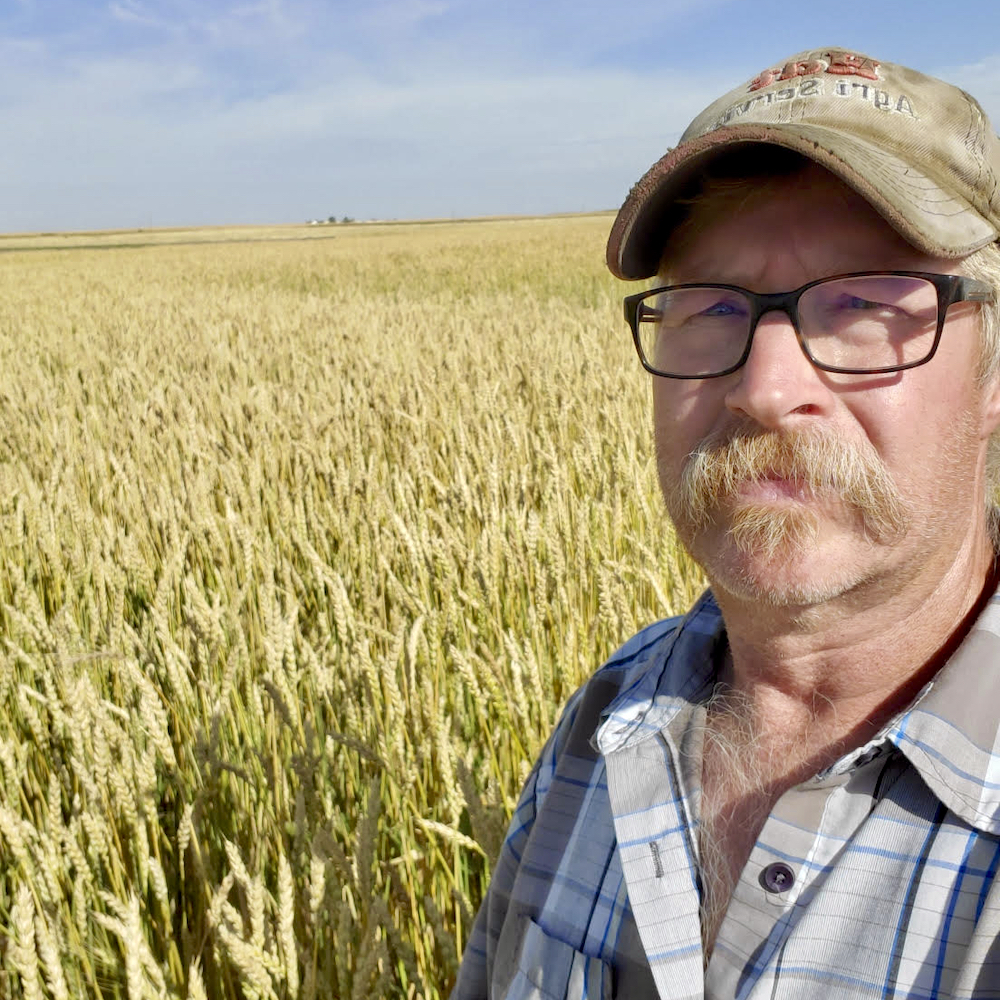
Despite that battle, Ehnes wouldn’t likely describe his growing year as disastrous. Part of his relative success was luck. His land got rain that passed others by, and that little bit of extra precipitation made a big difference, he said.
“If you were fortunate enough to be in an area that maybe picked up an extra shower or two, you can definitely see the difference.”
The rest came down to organic practices. An example is his strategic use of green manure, a crop that is plowed into the soil while still green, adding organic matter and nutrients to the soil.
On any given year, half of Ehnes’ acres are in green manure while the other half is growing a crop fertilized by green manure in the previous year.
His crops seeded into last year’s green manure fared better than this year’s stubbled-in crops, he said.
“It’s kind of interesting because the stubbled-in crops were right close to my main yard and we actually had probably three-quarters of an inch more rain than on my [green manured] crops.”
He also credits his pre-seeding tillage passes for incorporating what little moisture he had.
“Where I seeded this spring was probably one of the cleanest (areas) I’ve had in quite a number of years, just because of my tillage passes before seeding,” said Ehnes.
He didn’t have many weeds this year due to the hot, dry weather so he won’t likely do much fall weed management.
However, in wetter falls and wetter years in general, he uses a classic Noble blade: a minimum-disturbance cultivator invented by Albertan Charles Noble.
“It slides through underneath the ground about three to four inches depending on the depth I want to go. It kills off the weeds at the root level and leaves all my stubble and everything else standing, so I’m not prone to erosion disturbing (the soil) very much.”
But doesn’t tillage remove soil moisture? Ehnes has been asked this question many times over the years and the answer is the same: it depends how it is done.
“Yes, tillage does dry off the top portion. But I believe that top portion, if it’s kept dry, gives you less opportunities for weeds to grow. I’m seeding into moisture and the moisture is down below that.”
He points to the success he had on his tilled green manure crop.
“In that sense, when you think about the soil or soil moisture loss for a crop year, then you have to ask the question ‘why, if I’m doing tillage and I’m losing all this moisture, why is my [green manure] stuff with less rain better than my stubbled-in stuff?”
Ehnes has been cover cropping for nearly four decades, including in post-harvest, but in recent years he’s had trouble with seed establishment.
“I went out and I spread clover on my ground for the purpose of cover cropping but because it was so dry, we didn’t get any germination,” he said.
Yellow blossom sweet clover was his go-to cover crop from the early ‘90s to the mid-2000s. He’s been working with it again in recent years but is skeptical it will continue to work in dry times.
“Back in the ‘90s we had more rains, I think more timely rains than we have today.”


